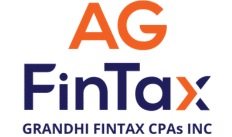More than 17 million Payment Protection Program (PPP) loans have been disbursed since 2020 according to the U.S. Small Business Administration data. Of those loans, as of May 10, over 3 million have been forgiven. But that doesn’t mean those who accepted PPP can move on without accounting for this government money. For-profit businesses must determine how to account for these funds and that means determining what type of transaction a PPP loan is. Does it fall under a loan or a grant? And can for-profits apply not-for-profit (NFP) accounting rules to PPP funds?
In this guide, we’ll review all the questions above to explain how a for-profit can capitalize on NFP accounting rules for PPP money and how to properly disclose this information.
According to the Journal of Accountancy, “when the PPP’s eligibility and loan forgiveness criteria are expected to be met, a for-profit could account for a PPP loan by FASB Accounting Standards Codification (ASC) Subtopic 958-605 as a conditional contribution.” This means a for-profit business could use not-for-profit accounting rules to address its PPP funds.
The latest guidance from the AICPA suggests that “Revenue can be recognized under this model when:
- There is at least one barrier to the entitlement that must be overcome; and
- There is a right of return to the provider if the grant or contract provisions are not met.”
Barrier Determination
Figuring out the “barrier to entitlement” means determining if the PPP loan has:
- Met the required limits for expenses, such as payroll, rent, or utilities incurred during the covered period.
- Met requirements for employee retention.
- Submitted forgiveness application to a bank and the U.S. Small Business Administration (SBA).
- Received approval of forgiveness by the SBA, or received documentation of forgiveness by the SBA or the bank.
Accounting for PPP as Loan
Under the guidance, it’s appropriate to account for PPP loans as debt. That applies even if the borrower is eligible for IAS 20 by analogy. The debt is deemed derecognized when it is eliminated by either:
- The debtor paying the creditor.
- The debtor is legally released from being the primary obligor, either judicially or by the creditor.
When the SBA forgives a loan, either in part or completely, any amount that is forgiven (including accrued but unpaid interest) is seen in the income statement as a gain on debt extinguishment.
Accounting for PPP as a Grant
The U.S. GAAP, or Generally Accepted Accounting Principles, does not have specific guidance on government grants made to businesses if the grants are not in the form of a tax credit. However, ASC 105, suggests that a borrower may choose to account for a PPP loan as a government grant by applying the guidance in IAS 20 by analogy if it will meet:
- the eligibility criteria for a PPP loan, and
- the loan forgiveness criteria for all or substantially all of the PPP loan
If the aforementioned factors cannot be met, management must deem the PPP funds as debt and follow the aforementioned instructions.
If management does opt to apply the grant model, there are additional steps to consider. Under IAS 20, a borrower should treat a PPP loan as an income-related grant and cite it as a deferred income liability. According to the International Financial Reporting Standards, “government grants are recognized in profit or loss on a systematic basis over the periods in which the entity recognizes as expenses the related costs for which the grants are intended to compensate.”
Disclosure
Properly disclosing the model used to account for PPP is important. PPP recipients should indicate a loan amount and a description of it in their accounting while following and explaining why and how the conditional contribution method was used.
Accounting Help
Given the intricate nature of applying NFP rules for PPP funds to for-profit entities, choosing to use the conditional contribution model can be a challenge. There are detailed accounting, GAAP, and reporting rules to follow that might be beyond the skill set of the average business owner. And there may also be more than one correct answer in determining how to calculate PPP.
While the SBA PPP program may have been a life raft for many companies this past year, accounting for may appear to present a whole new challenge. That’s where CPAs come in. If you feel overwhelmed or confused by how to account for the PPP funds that your business received, reach out to an accounting expert for help. With their deep understanding of the latest accounting guidance, tax concerns, and options available to for-profit organizations, they can help you navigate how to properly report your PPP funds so that you can move on, grow your business, and step into the next chapter of your company recovery plan.




